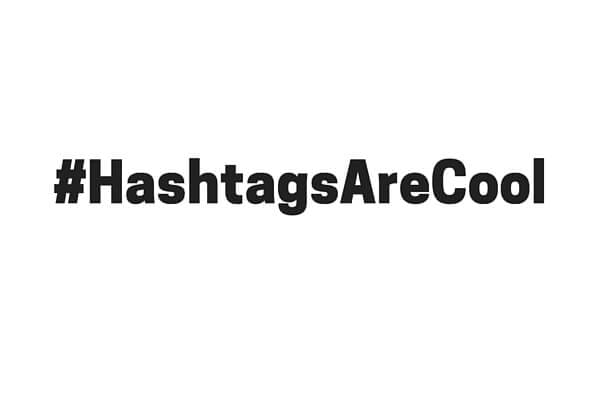Over the past fifteen years, the meaning of the pound symbol (#) has evolved. Once exclusively used on phones and as an indicator of phones numbers, in 2015, # is used for hashtags. Including # before a word or short phrase turns it into a clickable link that directs to other related content. For example, #SocialMedia used on Twitter, Instagram, Google+ or Facebook will send users who click on it to related social media content.
Today, businesses in all industries, sectors, and parts of the world have embraced social media as a means for marketing themselves, connecting with customers, and engaging potential leads. For a company building their digital presence, understanding hashtags and how to properly create them is vital to social media marketing success.
The Importance of Hashtags
“Hashtags are widely used to search for content within social networks and search engines, which means hashtags give you a great opportunity to get your information in front of potential customers without paying a dime,” Constant Contact noted in a 2014 blog post. Simply stated, adding one or two well-researched hashtags to your company’s social media content increases its visibility, meaning more potential clients will see your posts.
Additionally, when users see hashtags in posts, they’re inclined to click on them to dive deeper into that particular topic. One of the biggest challenges for any business on social media is encouraging engagement, and hashtags are one high-performing method for doing so.
Finally, hashtag usage in social media posts means your business is contributing to an ongoing conversation. The more you incorporate hashtags into your social media content strategy, the more involved your company is in a global exchange of messages and ideas about a few specific topics, which ultimately helps build expertise for your business.
Hashtag Best Practices
Relatively new to social media and hashtags? These six best practices will help you posts that properly and effectively use hashtags:
- Never use more than three hashtags in any social media post. Using more than that will come off as hashtag spamming to users, and they’ll ignore your posts.
- Research hashtags before using them. See how other brands and users are putting a specific hashtag to use, and determine if that’s the conversation your business wants to participate in.
- Keep it simple. A long string of words used for a hashtag is going to annoy users more than engage them.
- Use hashtags on content that includes a call to action. When people click on the hashtag and see your post, they’ll be inspired to respond to the call to action.
- Even though the rules of grammar have been tossed out in the Internet Age, capitalizing the first letter of each word in your hashtag makes it easier to read. For example: #crazycoffeecafe is much harder to understand than #CrazyCoffeeCafe.
- Hashtagging is different across social media channels. Understand how to best use hashtags on each and every channel where your business posts content and engages users.
Creating a Hashtag for Your Business
In a Social Media Today article published earlier this year, author Bernadette Coleman stated, “Hashtags can help your business by keeping your data organized and by making it easier for users to access social media posts connected to your brand, the topics you discuss and the things you recommend.”
While there is value in using non-branded hashtags in your company’s posts, creating a one or two uniques ones is a great method for branding your business on social media.
To create an awesome hashtag for your business, here are some additional best practices to keep in mind:
- Only develop a few branded hashtags. Since these hashtags will be unique to your business, you don’t want to flood users with too many different ones. Otherwise you might confuse them or dilute the amount of posts with your brand-specific hashtag.
- After you’ve developed a list of branded hashtags your business might use, research them to see if they are in use anywhere else. Avoid using a branded hashtag that has been allocated for a different purpose.
- Conduct a monthly Google search for your branded hashtags to see where else they might be popping up online. You might find your content being shared by a competitor, current client, or a potential lead.
- Normally, branded hashtags are businesses’ names or a quick catch phrase that everyone associates with the business. For example, beloved candy bar KitKat uses #HaveABreak on Twitter to engage with their followers and fans.
Need some help in the #hashtag department? Give our social media team a ring!

